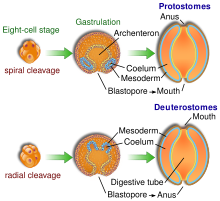When you study an enzyme-catalyzed reaction happening in the cell, there are basically 3 things you want to know:
1) how fast?
2) how sensitive to the substrate concentration?
3) how specific?
In terms of the Michaelis-Menten kinetics that would be kcat, KM and kcat/KM. These all can be measured in vitro, given that you can purify your protein of interest and set up an assay to follow the reaction. But that's in vitro, you say, and how about in vivo? May be everything is different there? What a pleasing thought for a microbiologist!
Here is one neat example.
RelE, a bacterial toxin that binds to the ribosome and cuts mRNA in the A-site, and I already discussed this very protein here and here. For RelE there is an in vitro system available, and kcat, KM and kcat/KM were measured, x-ray on the ribosome done and we have a pretty good idea about the nature of its catalysis and its specificity (see this post for details). Or do we? May be an in vivo investigation could uncover the real truth here?
Exactly that was performed here: RelE-mediated cleavage products were analysed in living E. coli, mapped on the mRNA sequence and here are the main conclusions:
1) RelE predominantly cuts within the first 100 codons (5') of the mRNA. Direct quote: "It remains unclear how RelE preferentially exerts its effects from the 5′ end of the coding region. Since we did not observe robust cleavage by RelE across the length of the mRNA as seen for HigB, RelE appears to specifically recognize a conformation or component of the translation complex that is unique to initiation or early elongation."
2) no codon specificity observed. None at all.
Wow, that's different. In vitro enzymology suggested that there is a strong codon specificity, and x-ray data were used to explain the bias, and now... it was all just a dream. So how does it work?
First, 5'-prime specificity. In bacteria, translation is co-transcriptional, which means that when mRNA is transcribed, it is translated immediately, before finishing off the transcription. There is even a physical link between the polymease and the ribosome via NusG. And when mRNA is translated, it is cleaved by RelE. Translation and transcription are starting from the 5'-prime... and so is the RelE cleavage, one would guess. Moreover, if you cleave the mRNA once, translation downstream of the cleavage site stops - and the initial cleavage is likely to happen co-transcriptionally at the 5'-prime and render cleavage at the 3'-prime impossible. Is there any need to involve "a conformation or component of the translation complex that is unique to initiation or early elongation"? I think not.
Second, absence of RelE cleavage specificity. Are we looking at RelE-mediated cleavages or at cleavages in general? Obviously, second: there is no way to identify the cause of the cleavage. And in E. coli there are loads of different RNAses involved in the mRNA degradation (here is a wikipedia entry for you, scroll down a bit), so is there a surprise that after RelE selectively cuts mRNA and a swarm of different RNAses processes in further, initial selective signal is lost? I think not.
So what did we learn here? I am not sure. I guess we learned that doing biochemistry in vivo is a tricky business. Doing controls there is hard, and if you get something directly contradicting all previous in vitro data it is worth considering some faul play - E. coli are evil and they use dirty tricks to mislead researchers!
References:
Hurley JM, Cruz JW, Ouyang M, & Woychik NA (2011). Bacterial toxin RelE mediates frequent codon-independent mRNA cleavage from the 5' end of coding regions in vivo. The Journal of biological chemistry PMID: 21324908
Neubauer C, Gao YG, Andersen KR, Dunham CM, Kelley AC, Hentschel J, Gerdes K, Ramakrishnan V, & Brodersen DE (2009). The structural basis for mRNA recognition and cleavage by the ribosome-dependent endonuclease RelE. Cell, 139 (6), 1084-95 PMID: 20005802
Pedersen K, Zavialov AV, Pavlov MY, Elf J, Gerdes K, & Ehrenberg M (2003). The bacterial toxin RelE displays codon-specific cleavage of mRNAs in the ribosomal A site. Cell, 112 (1), 131-40 PMID: 12526800
Burmann BM, Schweimer K, Luo X, Wahl MC, Stitt BL, Gottesman ME, & Rösch P (2010). A NusE:NusG complex links transcription and translation. Science (New York, N.Y.), 328 (5977), 501-4 PMID: 20413501
